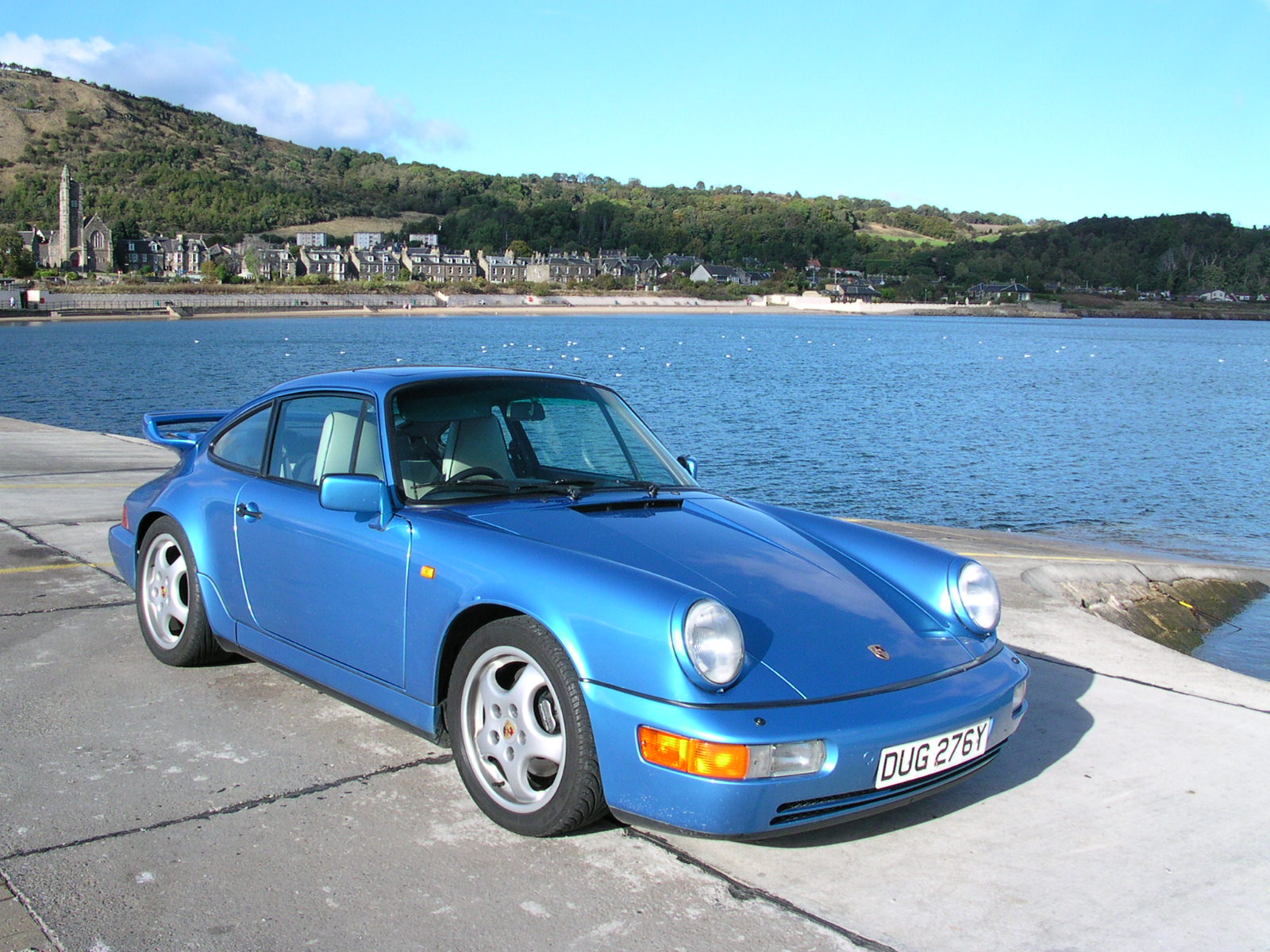Now is the time to buy a 964
These days the 964 has a loyal following but it’s still a hard 911 to pigeonhole. It’s got classic lines, albeit updated with plastic bumpers, but with modern (at least for its time) technology such as four-wheel drive, ABS and electronic heating controls. However, classic enthusiasts would rather go the whole hog and have a Carrera 3.2, while fans of later air-cooled 911s opt for the sexier-looking and better handling 993.
Introduced in 1989 in an attempt to drag the aging 911 concept into the rapidly approaching new decade, the 964 was first offered only in four-wheel drive Carrera 4 form, to showcase new technology and to prove that the 911 was a safe and surefooted car. It was well received, although some complained of excessive understeer, and others moaned that it wasn’t a true 911. For them, the rear-drive Carrera 2 (the only 911 ever to badged thus, by the way) followed in 1990. It was identical to the Carrera 4 in every way but its transmission system.
The 964 also boasted conventional coil springs instead of the previous torsion bar suspension, a 250bhp 3.6-litre engine with twin spark plugs per cylinder which allowed the use of 95-octane fuel despite a compression ratio of 11.3:1.
The bodyshell was updated to accommodate the new transmission system and suspension although most of the external panels were carried over from the previous 911. The deformable bumpers were much neater and more aerodynamic than the old ‘impact’ items, while a novel retractable rear spoiler helped high-speed handling and engine cooling, while retaining the classic 911 lines at rest – an innovation that has continued to the present day.
Inside, the classic five-dial dash remained, albeit updated with an array of warning lights hidden within the dials. The gearlever was shorter and sportier and, at long last, the 911 had simple to understand heating controls.
The 964 did a great job of keeping the 911 alive but was only an interim measure before the even more different 993 arrived in 1993. Worries about oil leaks and other reliability issues gave the 964 a bad reputation which it has taken a long time to recover from and it has always lived in the shadow of the 993. Which is a shame but it does make it an affordable 911.
How to buy
Good 964s are getting increasingly hard to come by. As the cars have got cheaper, they’ve often not been maintained correctly and there are many tired and scruffy examples out there. The good news for buyers is that prices have dipped recently; not long ago here in the UK you’d pay around £18,000 for a top-notch late car, now you’d be hard-pressed to pay more than £16,000 – assuming you can find one.
High mileage cars can be OK if they come with a good history and perhaps an engine rebuilt. In fact, a good service history is important for any 964 unless it’s very cheap. It’s important to be able to see that the car has been properly maintained and cherished.
What to look for
The 964 has a reputation for engine oil leaks but dates back to the early days when there was no seal between the cylinder head and cylinder. Seals added to later engines and, today, you’d be very unlucky to find an early one that hasn’t been updated. Oil leaks can occur, just as they can with any air-cooled 911 engine and are usually due to high mileage, age or lack of maintenance. Any leak should be investigated to determine the source and extent of work required to rectify.
The twin distributors are linked by a rubber belt which, if it breaks, can lead to engine damage. Porsche improved the lifespan of the belt by fitted later distributors with a plastic vent pipe. This should also have been retrofitted to all 964s – if you find a 964 without this little pipe, you can assume it’s not been properly maintained.
A lot has been said about the 964’s troublesome dual-mass flywheel. Again, though, this only applied to early cars (but not very early 1989 examples which had a conventional flywheel) which had a Freudenburg flywheel that would disintegrate. Later cars had a much better LUK item and most 964s have now been fitted with one of these or a fixed RS flywheel. Check the service history.
Brake calipers can corrode, which doesn’t become a problem until you try to fit new pads. The bodge solution is to grind the pads to fit which can lead to juddering and squealing. The only real solution is to strip and rebuild the calipers.
The original 964 ride height was ridiculously high at the front and many have been lowered. If this is done properly it can improve the handling, so check the service record for lowering springs and four-wheel alignment.
Check the bodywork for damage and poor-quality resprays. Rust is rare so be cautious of a corroded car. Later-type Cup mirrors and wheels are a common upgrade although, increasingly, buyers want cars in an original state.
Finally, have the car checked out by someone who knows Porsches – there’s a lot that you can miss.
Our choice
We like both the Carrera 2 and the 4, but we’d go for the former for its driving purity. It would be a coupe every time, too. The later cars with their Cup wheels and mirrors look great, especially if they’re finished in a modern metallic shade, such as silver or blue.

Comments (1)